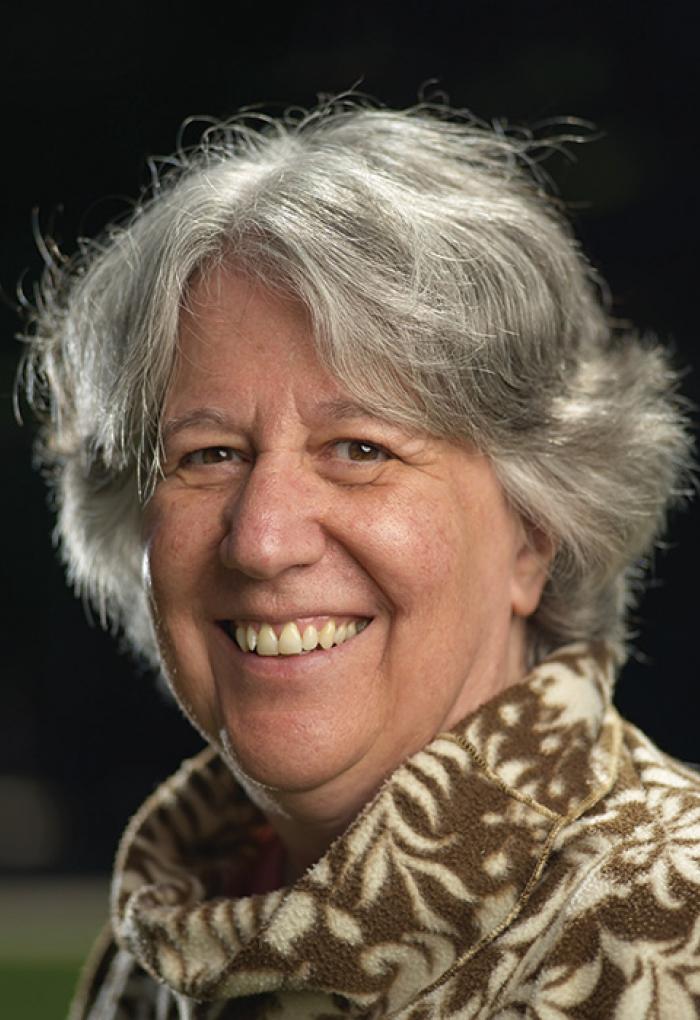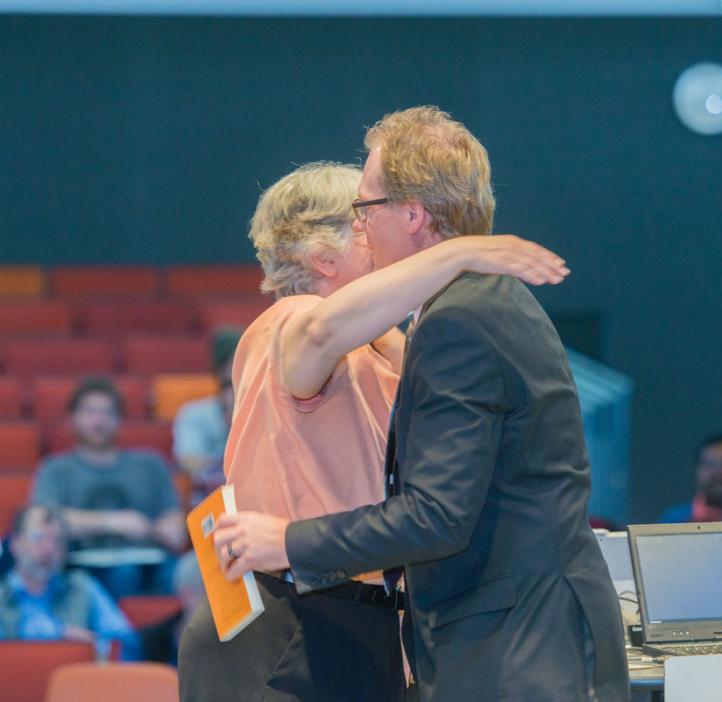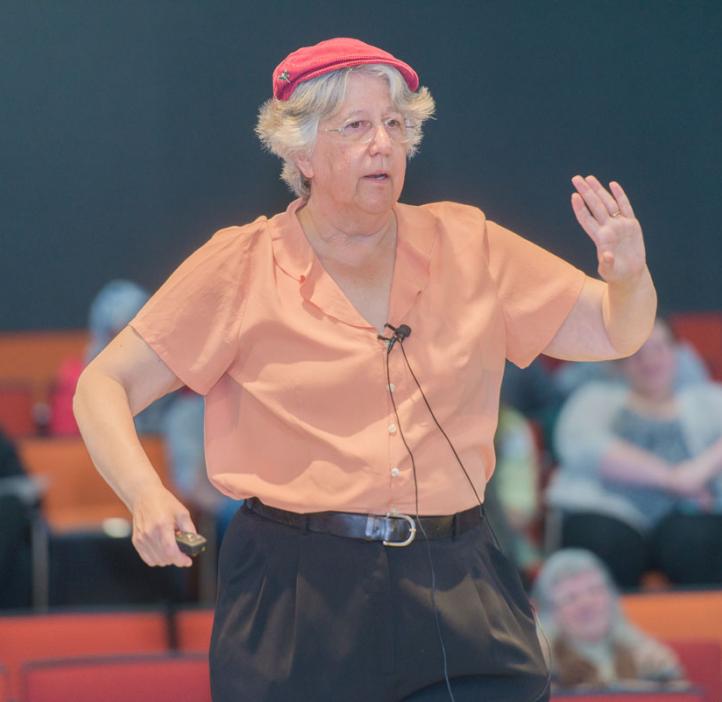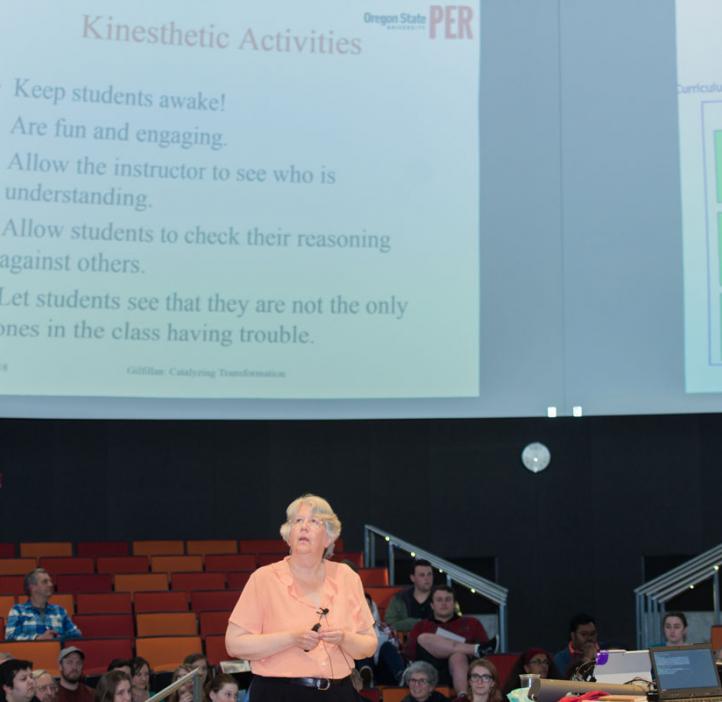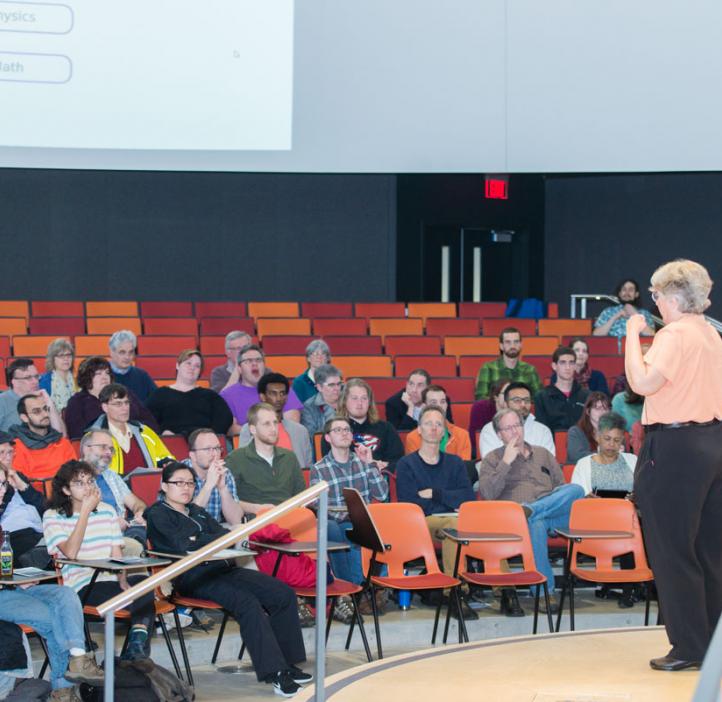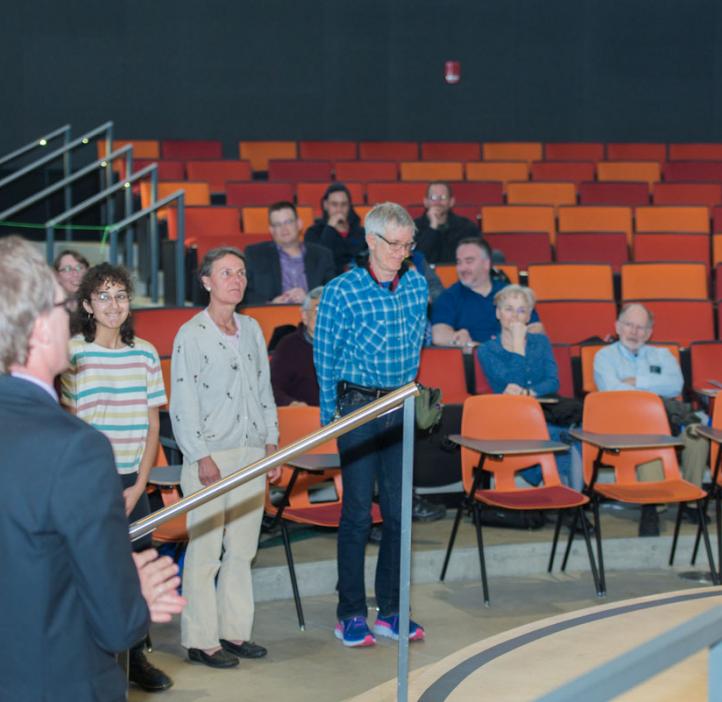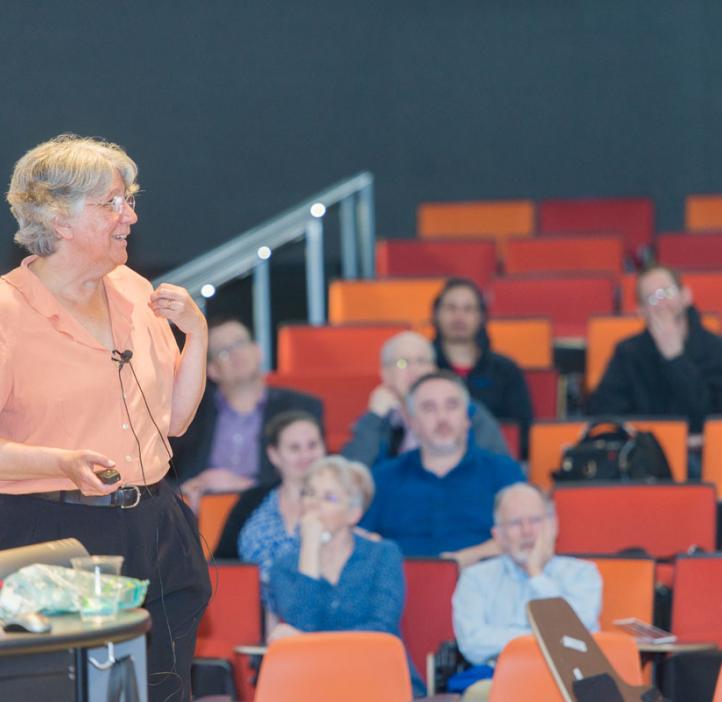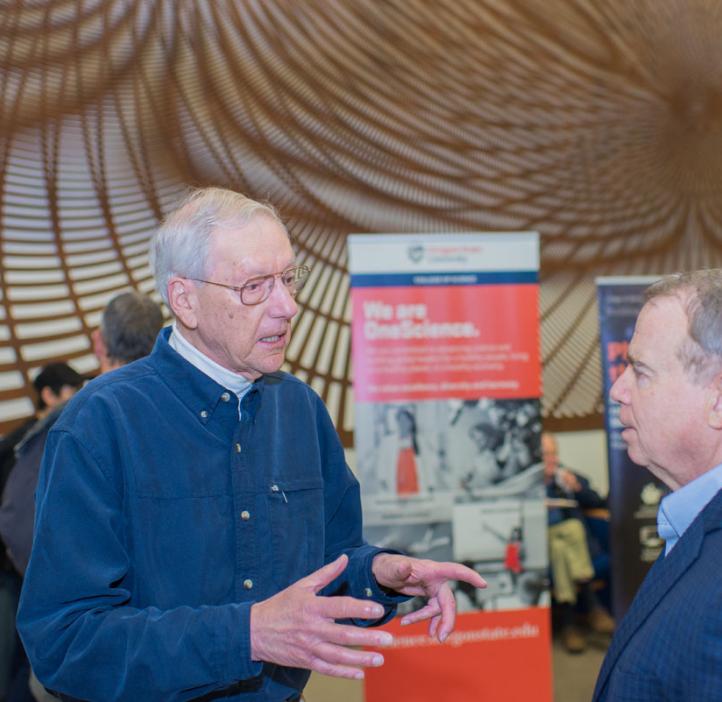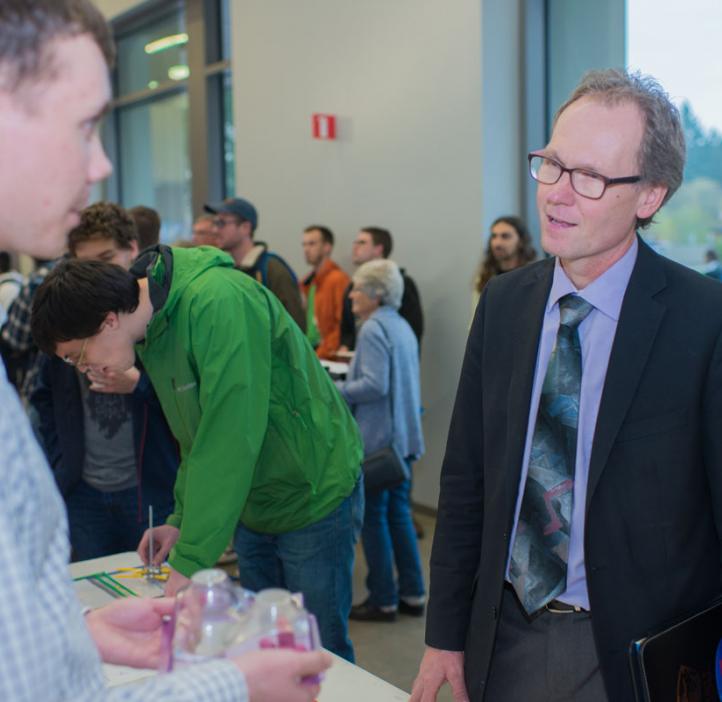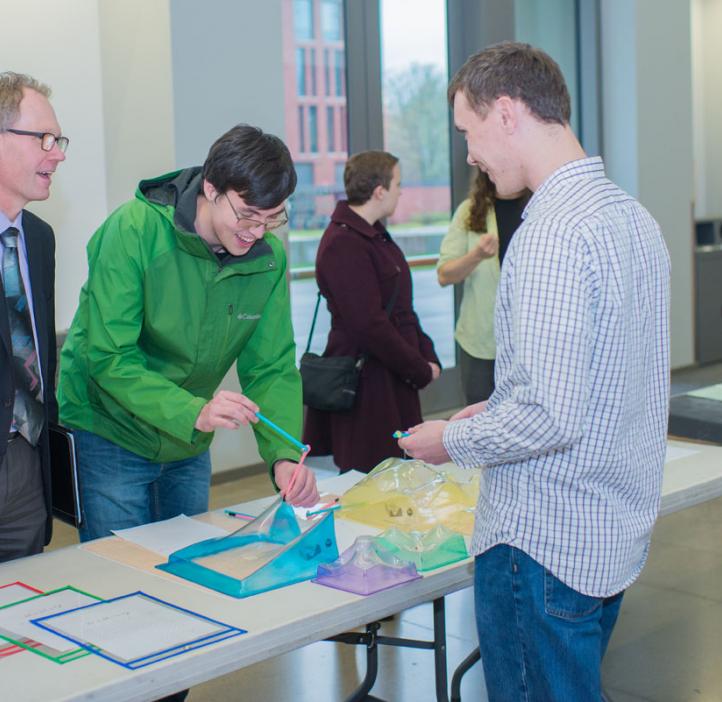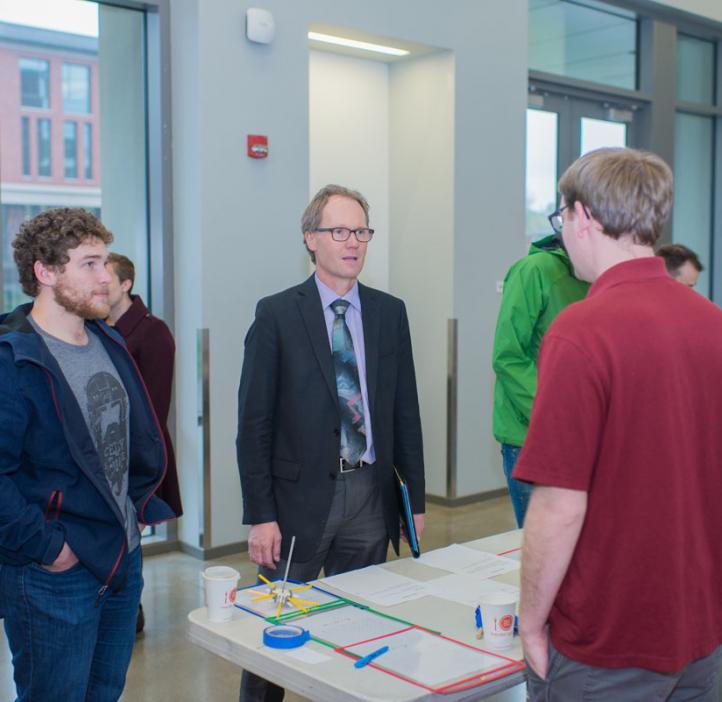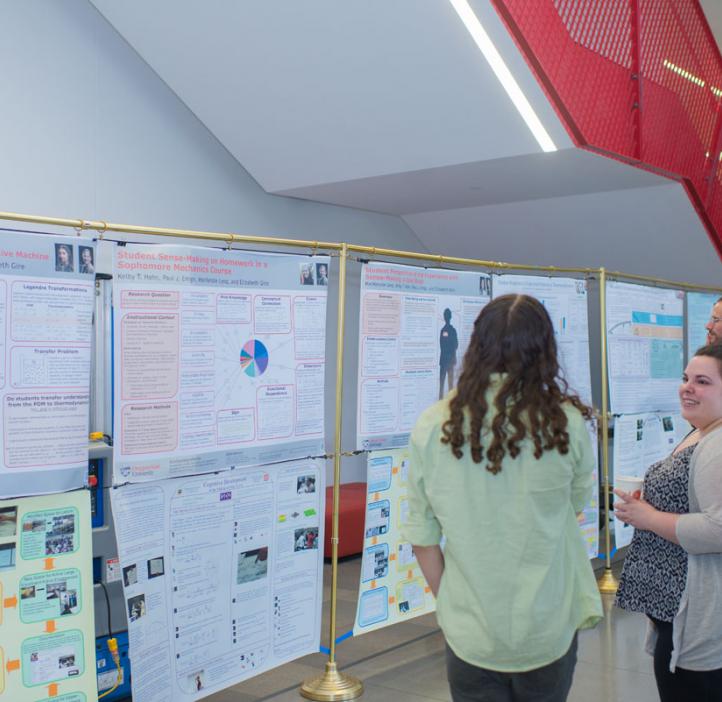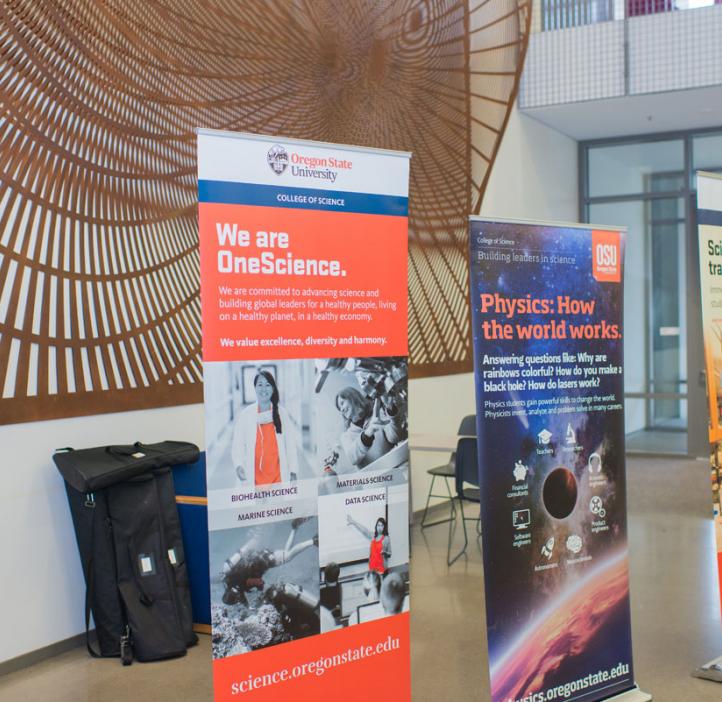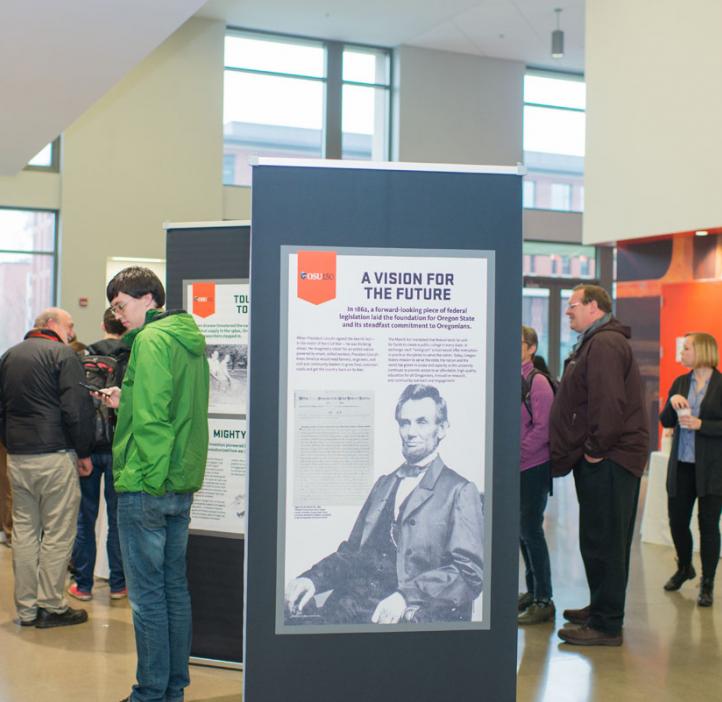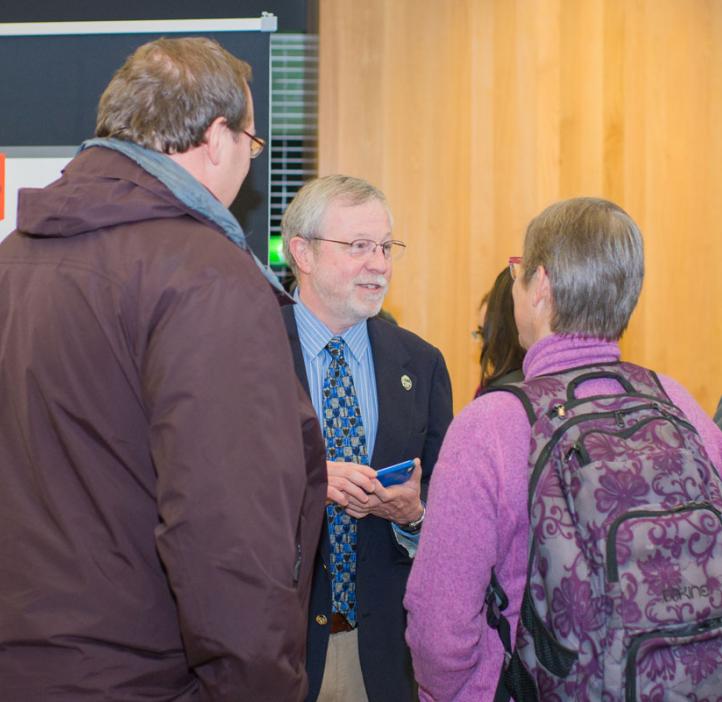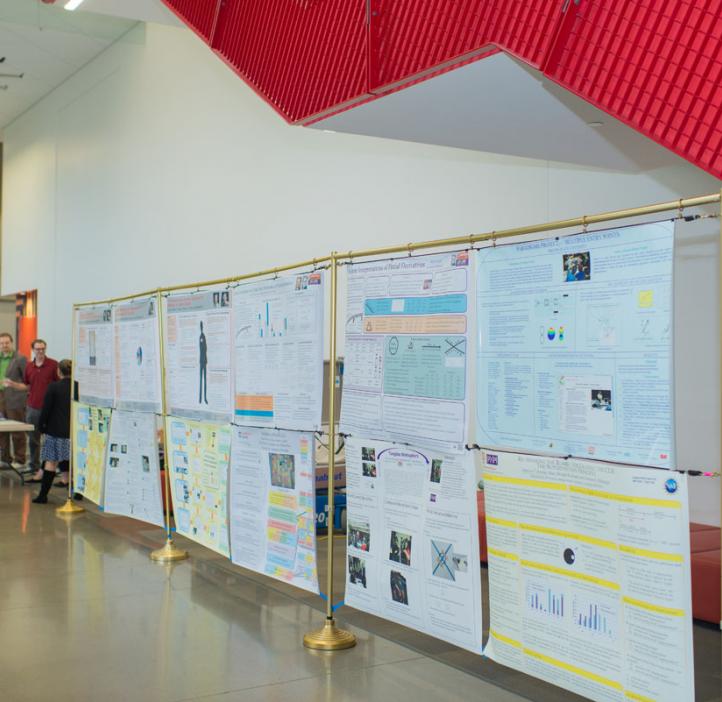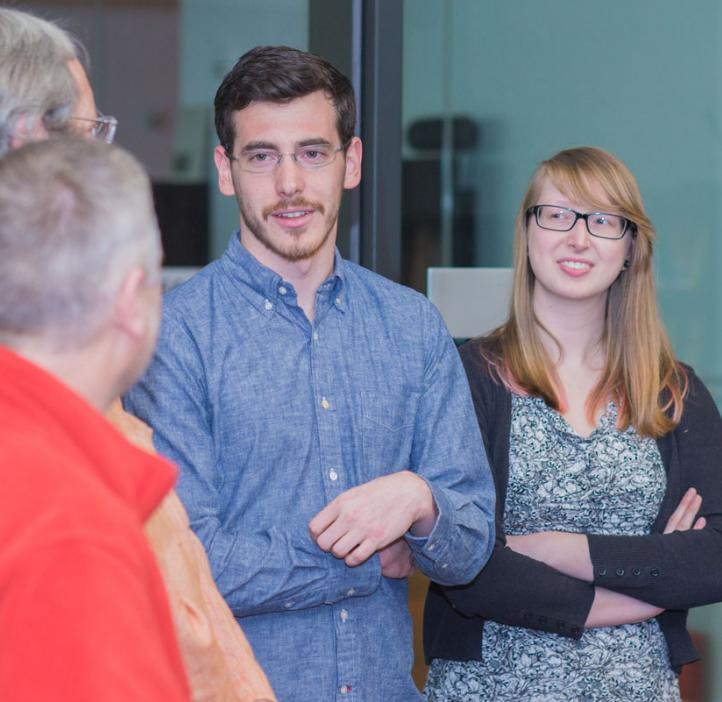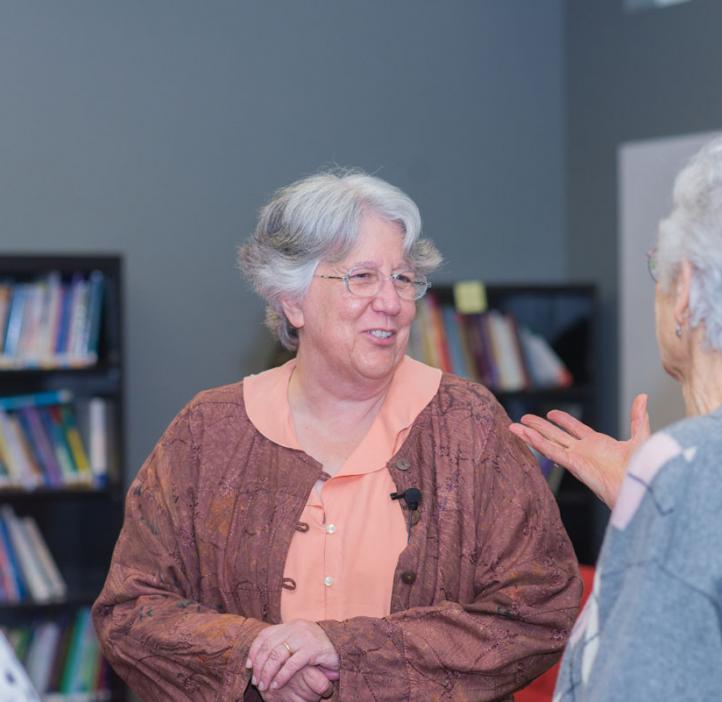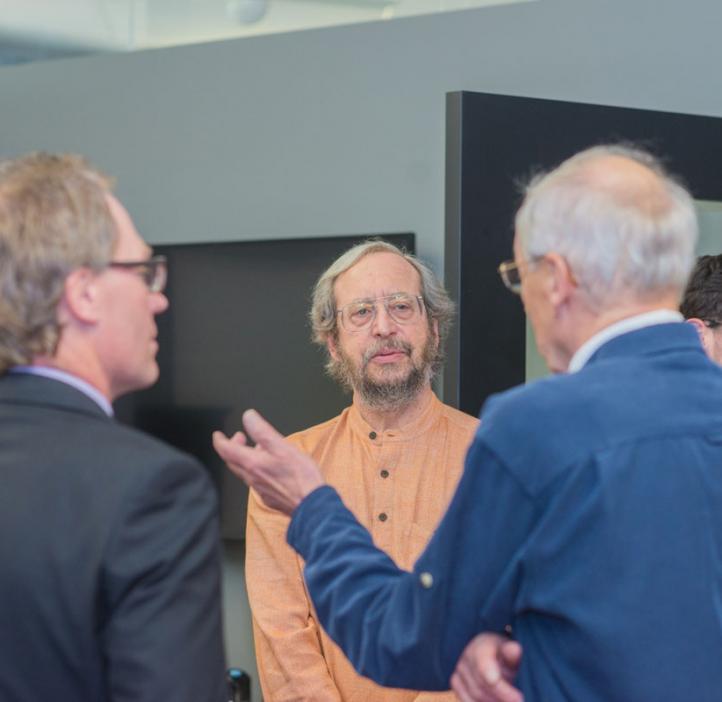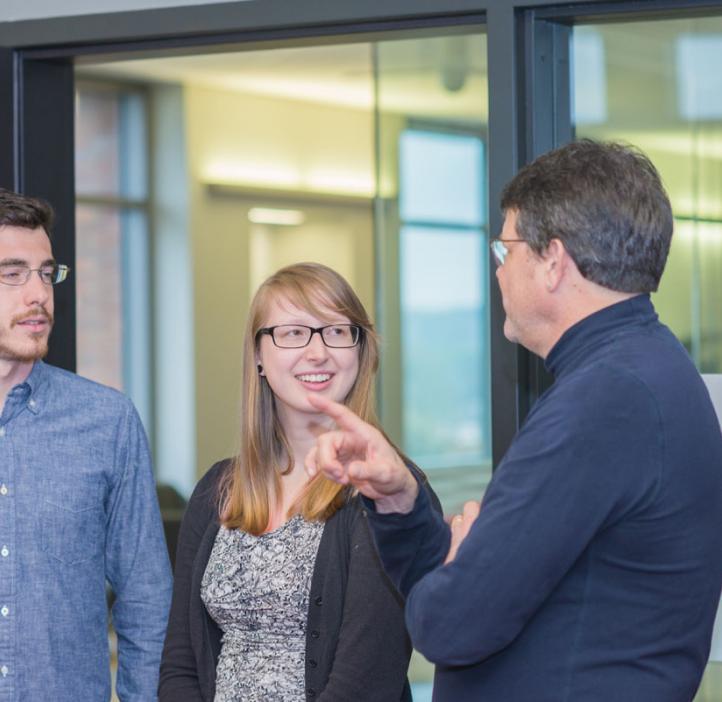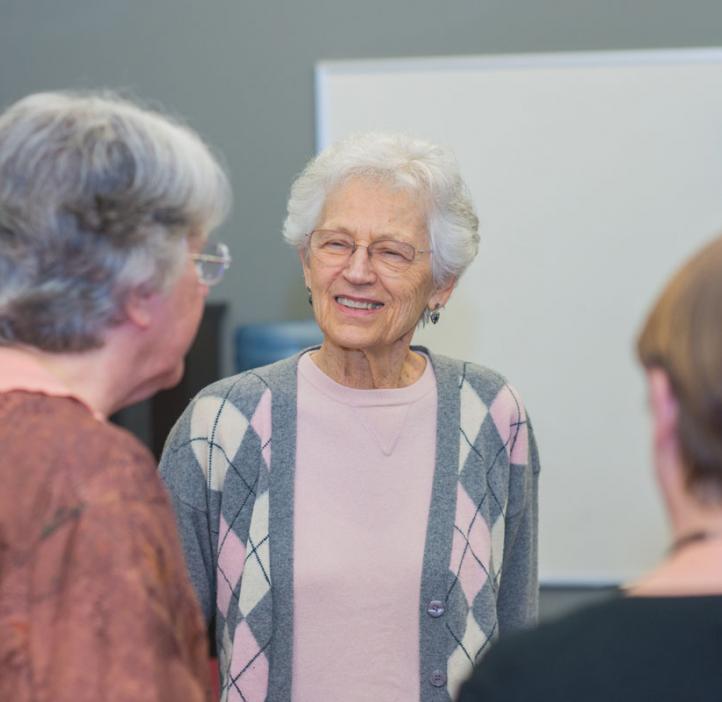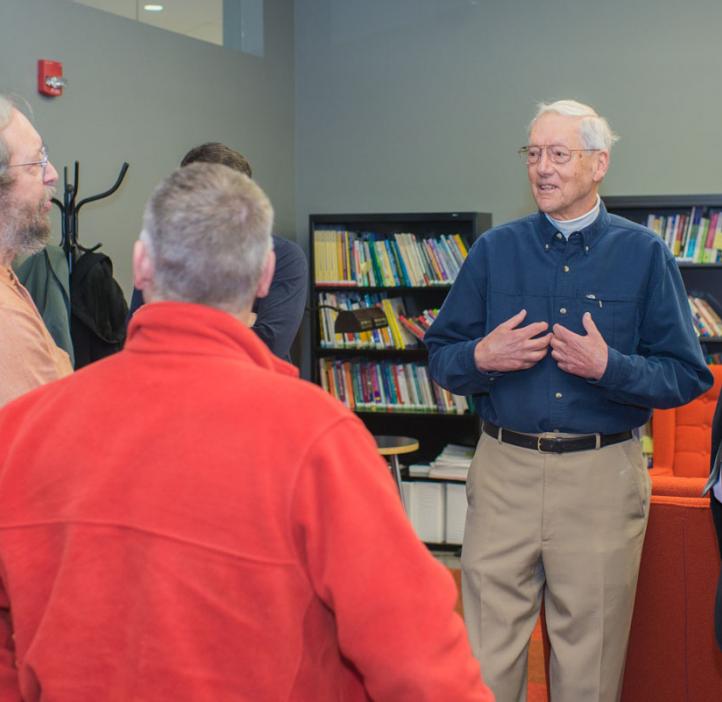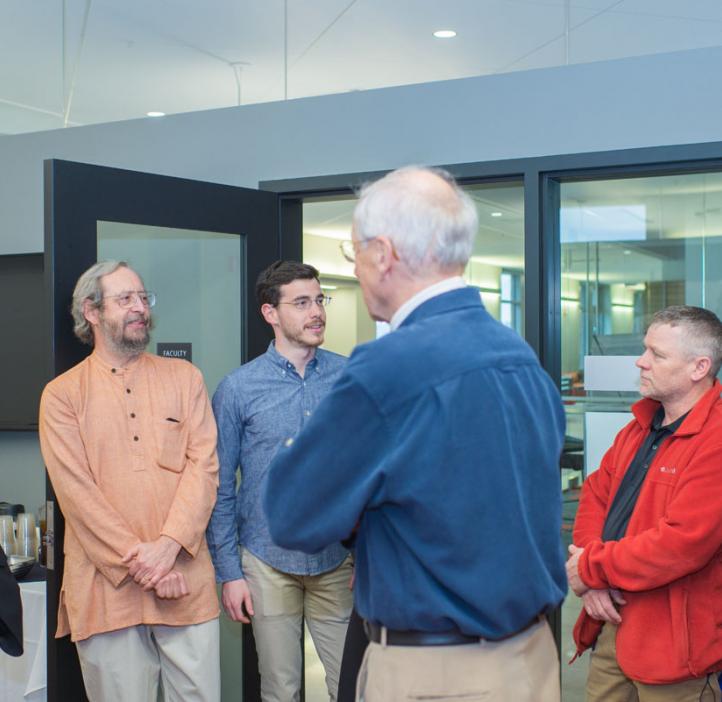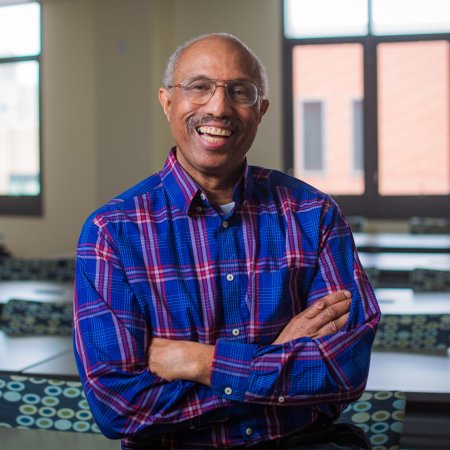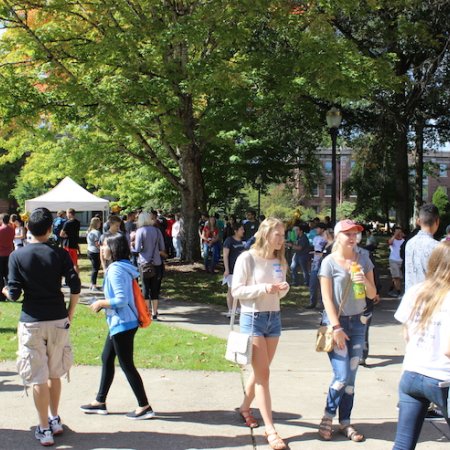Watch the video on our YouTube channel. Note, the lecture begins at the 10:03 mark, after the introductory remarks from the dean.
Manogue was the 2017 recipient of the College of Science’s F.A. Gilfillan Memorial Award for Distinguished Scholarship for her outstanding contributions to research in higher education in physics. The award recognizes achievements in science by honoring a faculty member in the College who demonstrates a long and exceptional scientific career with nationally and globally recognized scholarly achievements.
Highly skilled both in theoretical quantum gravity research and in physics education research, Manogue is perhaps best known for her pioneering role in establishing and leading the Paradigms in Physics project established in 1996, which has brought about far-reaching changes in how students learn physics at OSU and nationally.
One of the grandest experiments in science education at OSU, the Paradigms Project overhauled and modernized the upper-division physics curriculum to better reflect the ways in which professional physicists think about the field, replacing traditional teaching styles with interactive and engaging methods to facilitate student learning and problem-solving. The Paradigms team’s work on the project has been funded by 11 National Science Foundation (NSF) awards totaling over $ 2.8M since the program’s inception.
Now in its twenty-second year, the NSF-supported Paradigms Project has not only successfully endured the test of time, earning plaudits from generations of students, but has also garnered national recognition from universities across the country for setting pedagogical standards worthy of emulation.
Understanding how students learn
Manogue arrived at OSU in 1987 as the first woman tenure-track assistant professor of physics. She and her spouse Tevian Dray, a mathematician, were among the first dual hires at OSU. In a fortunate twist of fate, the OSU Faculty Senate voted in a rule that encouraged dual hires the week Dray was interviewed on campus. Manogue's arrival not only heralded the beginning of more gender-inclusive hiring approaches in the physical sciences at OSU, but would also lead to modernizing the curriculum in physics.
“Corinne is a leader in the field, nationally and worldwide. She has made discipline-based education research in science a highly respected endeavor that is changing the way we teach science in universities,” said Heidi Schellman, Head of the Department of Physics.
"She is a pioneer in applying qualitative methods to physics learning in upper division courses."
In the late nineties as the Paradigms Project was growing, Manogue started training herself in physics education research by going to conferences, applying for grants, and contributing to scholarship, while applying the lessons of her research to the classroom. In due course, she trained multiple students and postdocs who have gone on to become leaders in physics education research in their own right. Manogue has disseminated the lessons of the Paradigms program to physics teachers nationwide at innumerable conferences, colloquia and workshops.
Leading curriculum and institutional change in learning appears to come naturally to Manogue. The physicist calls herself a child of “most of the big education reforms.” In elementary school in suburban Cincinnati she devoured the new math curriculum in the sixties—a short-lived national educational transformation; in high school she learned introductory physics based on the Physical Science Study Committee (PSSC) curricular materials, a revolutionary new form of physics education that was developed at MIT and taught to high schoolers in the sixties, seventies and beyond.
“I was really embedded in education reform. I even did a project on Montessori in high school. Doing active engagement and thinking creatively have always been part of who I am,” Manogue observed.
After graduation, Manogue headed to Mount Holyoke, a women’s college in Massachusetts, for her undergraduate studies, primarily because the institution had graduated more women who went on to STEM Ph.D.s than any other college or university in the country at the time.
Initially, a mathematics and biology major, Manogue ended up double-majoring in math and physics (She dropped biology because it didn’t have enough math in it.) Manogue’s academic excellence at Mount Holyoke impressed her professors and she was persuaded to stay on for an additional year after graduation because the college needed an advanced student to work with celebrated British cosmologist Dennis Sciama—the advisor of Stephen Hawking—who was visiting that year from Oxford. She was happy to oblige.
With Sciama, Manogue studied black holes. He also put her on the path to a lifelong fascination with quantum gravity by sharing a seminal paper on the subject that the young Manogue found incomprehensible but nonetheless persisted in trying to decipher. Enthralled by the interplay of math and physics in the article and wanting to achieve a similar feat, Manogue decided to apply to graduate schools to study the famously obscure subject.
“That’s the story of how I ended up in physics,” she laughs.
In graduate school at the University of Texas, Austin, Manogue specialized in field theory in curved space and pursued postdoctoral research at The Institute for Advanced Studies in Princeton, New Jersey. She met Dray, her future spouse, at the Institute and got started on her research on octonions.
In stark contrast to her classes at Mount Holyoke, Manogue found herself to be one of the very few women in physics at the postgraduate institutions she attended. Although she found the entrenched sexism rather distressing, the fact that “she had built up an identity as a scientist” helped Manogue succeed.
“I am still surprised to find myself in physics. I don’t think I would have become a physicist if I had studied the subject at a coed school, instead of Mount Holyoke.”
Manogue’s efforts in her classes to create a friendly, collaborative social environment where students feel safe to explore difficult questions and communicate with their peers are influenced by her negative educational experiences as much as they are by the positive ones.
“Physics is a field that can be very aggressive in terms of how traditional research is discussed and that turns off a lot of people including students," said Manogue. "A big chunk of my career has been devoted to deliberately trying to change that culture within the field."
"One of the main ways to change the culture is to change the classroom. I am changing the next-generation of physicists by showing them the value of collaboration,” added Manogue.
Manogue teaches upper-division courses in electromagnetic theory and quantum mechanics. She uses her research on how external representations can help student learning to craft “interactive pedagogies” in her classroom. Concrete erasable surfaces help her students grasp graphical representations, functions, variables and three-dimensional visualization. A Partial Derivatives Machine with pulleys and strings helps students understand thermodynamics equations and the concept of entropy. Large, erasable whiteboards used in group projects facilitate creative brainstorming. Students use their own bodies to model geometric relationships.
“We do a lot of things to bring the students’ reasoning out in the open where the other students can learn from it and can understand what their peers are thinking,” explained Manogue.
Through it all her emphasis is on undoing hierarchies of the traditional classroom and advancing equity and inclusivity where students feel safe to explore and communicate with others their approaches to a physics problem. “I believe in setting up classroom spaces where everybody has the chance to talk with the faculty member and get that quality conversation about the hard things.”
In addition to being at the helm of significant cultural shifts in the teaching of undergraduate physics, Manogue has made important contributions to two areas of theoretical physics: exploring the fundamental symmetries of physics by exploiting the symmetries inherent in exceptional mathematical structures involving the octonions, a non-commutative, non-associative extension of the complex numbers; and quantum field theory where she has made discoveries about the properties of the vacuum, the lowest energy state of the electromagnetic field in the universe.
Manogue has produced distinguished research and authored over 70 articles on student learning and on theoretical physics. With Dray, she has co-authored The Geometry of Vector Calculus (2009-18) and The Geometry of the Octonions (2015).
Training students to think like physicists
In particular, Manogue’s education research has focused on how students make the difficult transition from lower-division to upper-division physics and how to develop the specialized intellectual and instructional resources to help students learn to “think like physicists.”
Her research explores questions such as: How do students grapple with problems? What strategies do they use? What content should be taught to students first and what should come after? Where does their thinking break down and where are they unable to take an important step in problem-solving? What new activity should be introduced to the classroom to address that problem?
Her public lecture was extremely pertinent, coming at an opportune time when the university is energetically pursuing various student success objectives that prioritize inclusive excellence and educational support for every student. Her talk illuminated for the community what research in education in a STEM field looks like and how education research faculty, especially those embedded in disciplinary departments, can play a role in enhancing undergraduate science education.
“My experience has shown that STEM education reform works best as a grassroots and collaborative effort in a department where faculty share methods, results and ideas to make curricular decisions on what students should learn and how to make them learn better,” explains Manogue, who also discussed her involvement in changing the culture of teaching and learning within physics and within classrooms.
Her work with the Paradigms Project has garnered national recognition. Manogue was elected a Fellow of the American Physical Society “for her role in the development of the innovative Paradigms Curriculum for upper-level physics majors and for providing students with a bridge between vector calculus and physics using differentials.” The latter refers to Manogue’s significant work with Dray in developing curricular materials to bridge the “vector calculus gap” between the way vector calculus is usually taught by mathematicians and the way it is taught by other scientists.
She was awarded the American Association of Physics Teachers award for Excellence in Undergraduate Physics Teaching and the Oregon Academy of Science’s Outstanding Educator in Science and Mathematics, Higher Education Award. She has also won most of the teaching awards at OSU.
“I am particularly delighted to receive the Gilfillan Award because it is a research award. So many people think that teaching well is something you are born with rather than recognizing that really good teachers work at it really hard and actively use the results of education research,” said Manogue.
Gallery

